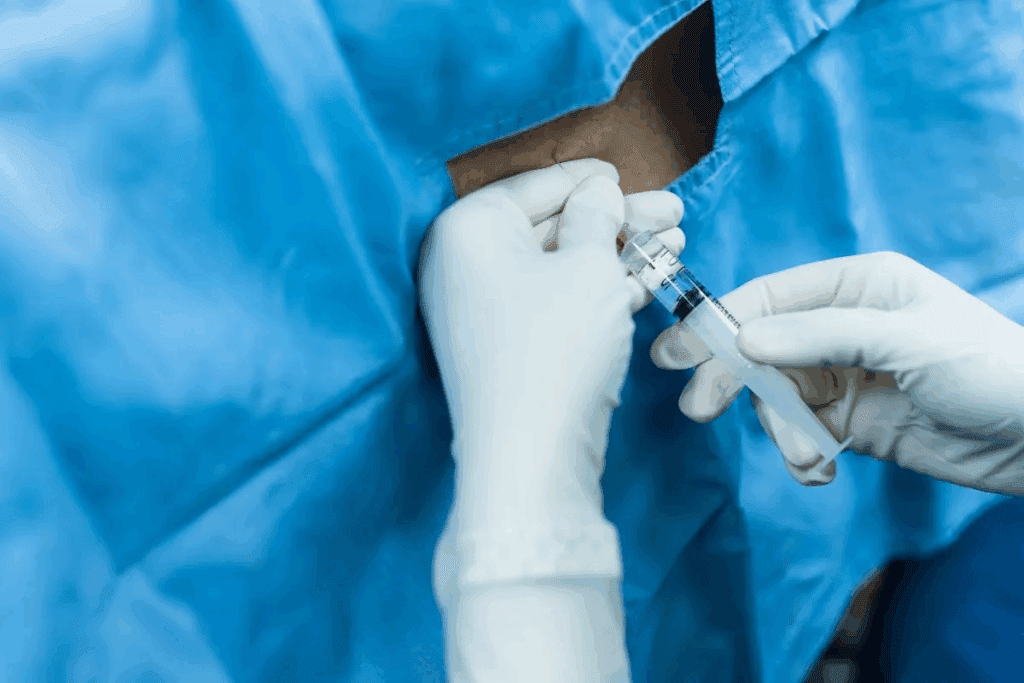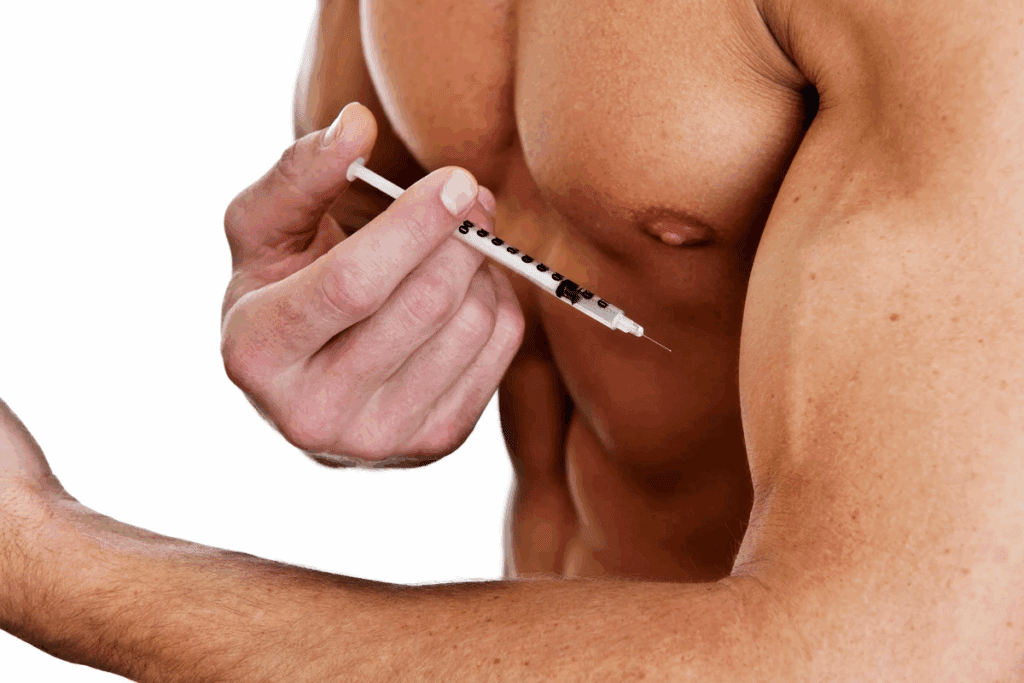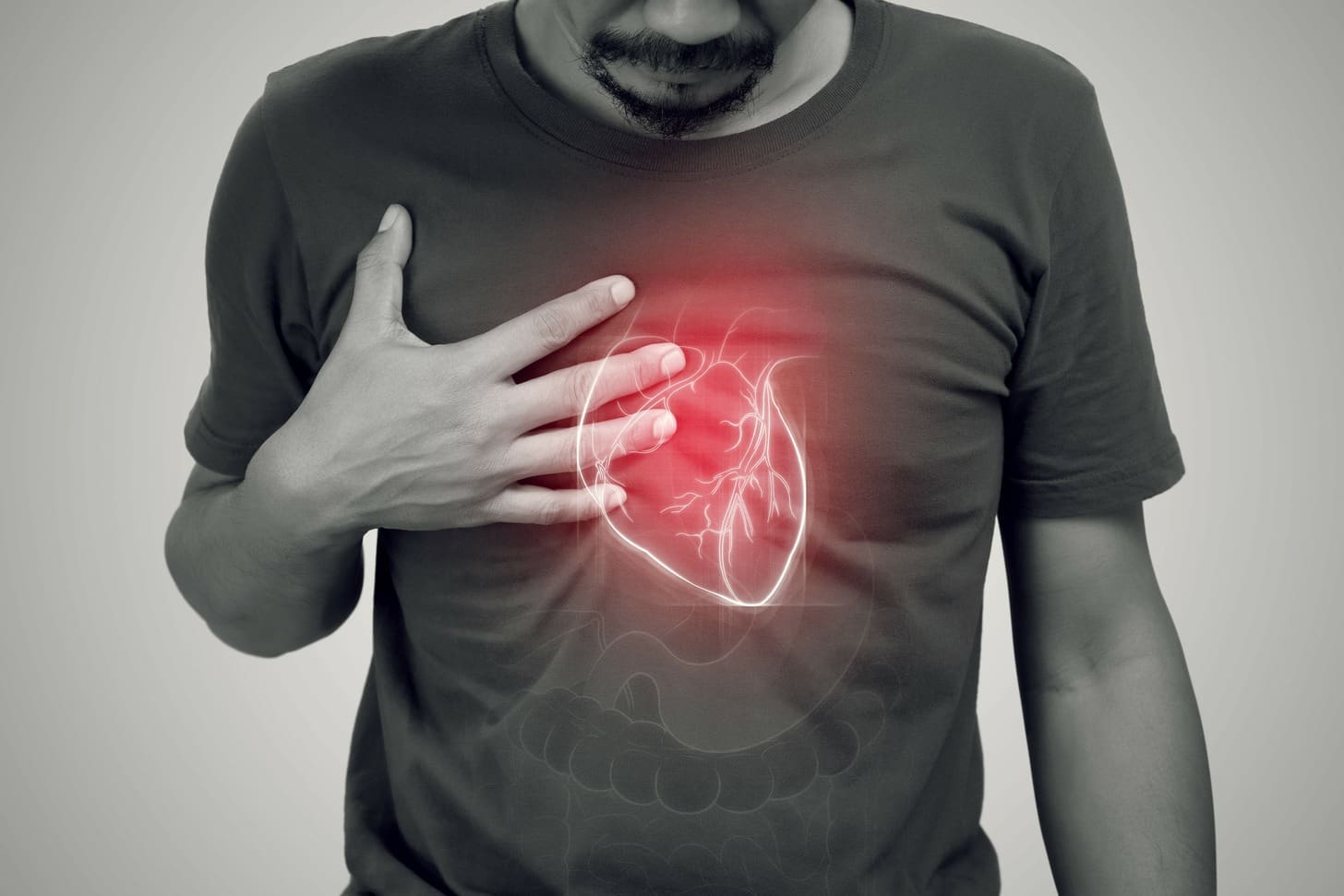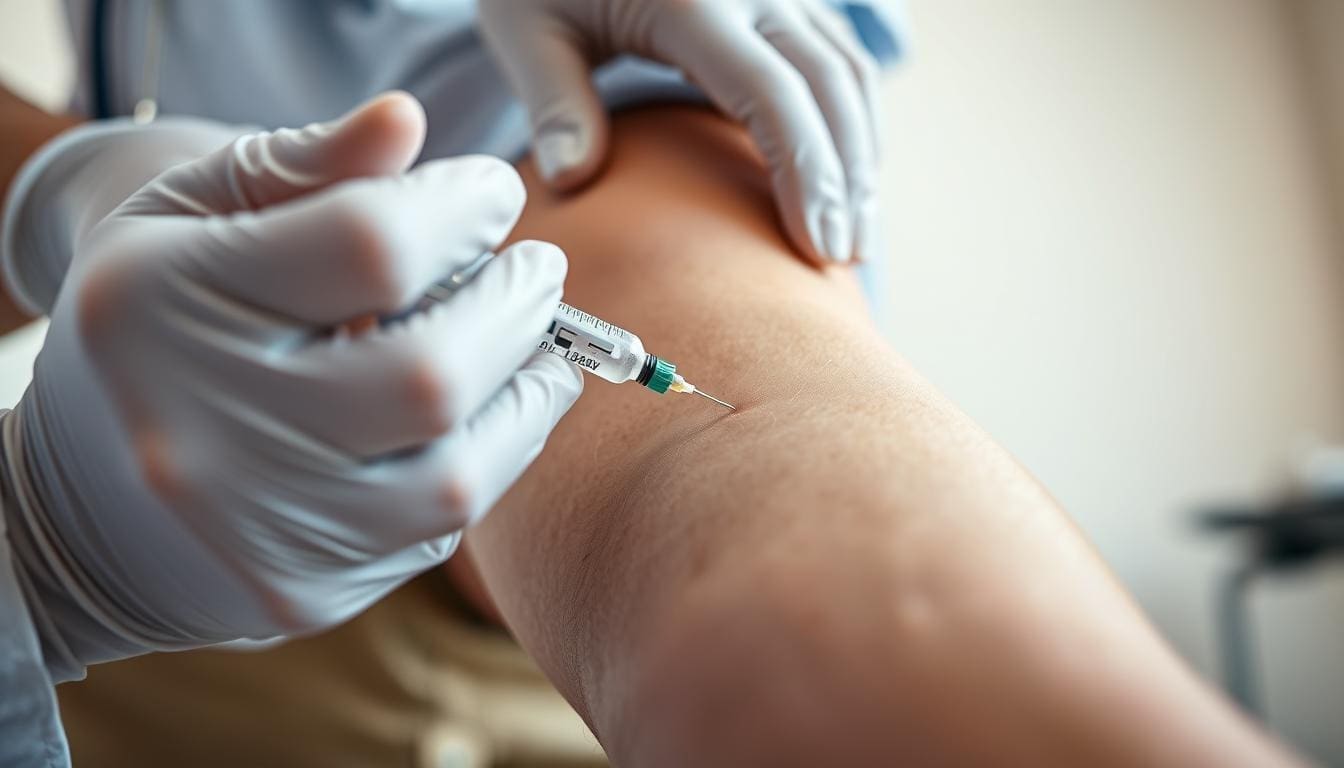Last Updated on November 26, 2025 by Bilal Hasdemir

Steroid injections are a common treatment for pain and inflammation. They can cause uncomfortable side effects like facial flushing. This reaction usually shows up within 24 hours and goes away in 1-2 days.
At Liv Hospital, we understand your concerns about unusual reactions to medical treatments. Our team is dedicated to providing top-notch healthcare. We also offer full support and guidance for international patients experiencing flushing after steroid injection.
We’ll dive into the important facts and tips about cortisone flush. We want you to know what to expect and how to deal with this common side effect.
Key Takeaways
- Understand the causes of facial flushing after a steroid injection.
- Learn how to manage and minimize the discomfort.
- Discover the benefits of choosing a patient-centered hospital like Liv Hospital.
- Find out what to expect during the recovery period.
- Get practical tips for reducing the risk of cortisone flush.
Understanding Flushing After Steroid Injection

Steroid-induced flushing happens in some people after a steroid shot. It’s a side effect of corticosteroids, which are used to reduce inflammation.
What Is Steroid-Induced Flushing?
Flushing after a steroid shot means your face gets red and warm. This usually goes away by itself. It happens because the corticosteroid makes blood vessels expand.
Common Symptoms and Presentation
Flushing symptoms can differ for everyone. But most people feel redness, warmth, and flushing in their face. Some might also feel heat or discomfort.
Timeline of Symptom Development
Flushing starts within 24 hours after the shot. It usually goes away in 1-2 days. But it can vary based on the person and the steroid. Knowing this helps manage symptoms better.
The Science Behind Facial Flushing

To understand facial flushing, we need to look at how the body reacts to corticosteroids. This reaction is a common side effect of steroid injections. It has been studied a lot in medical research.
Physiological Mechanism of Flushing
Facial flushing happens when blood vessels widen, or vasodilate. This lets more blood flow to the skin’s surface. The body’s reaction to the steroid injection causes this, making the skin look red and warm.
Vasodilation is key in this process. When blood vessels get wider, they let more blood through. This makes the skin look flushed. The exact ways steroids cause vasodilation are complex and involve many biochemicals.
Relationship Between Steroids and Vasodilation
The link between steroids and vasodilation is not simple. Steroids are known for reducing inflammation, but they can also cause vasodilation. Studies show that corticosteroids can change how blood vessels work. This can lead to flushing in some people.
“The administration of corticosteroids can lead to vasodilation, which is a key factor in the development of facial flushing.”
Individual Susceptibility Factors
How likely someone is to flush after steroid injections varies a lot. Things like genetics, skin type, and health can affect it. The dose and type of steroid used also matter.
Knowing these factors helps doctors talk to patients better. It also helps them reduce the chance of flushing by giving the right advice before and after the injection.
Types of Steroid Injections That Commonly Cause Flushing
Steroid injections can lead to flushing, but the risk varies by type. Each corticosteroid has its own effects on flushing.
Triamcinolone and Flushing Reactions
Triamcinolone is a strong corticosteroid used for inflammation. It can cause facial flushing in up to 40 percent of people. This happens because it widens blood vessels, making skin warmer.
Cortisone Injections and Associated Symptoms
Cortisone injections can also lead to flushing. The symptoms are similar to triamcinolone’s, like redness and warmth. These feelings often happen in the face and neck.
Other Corticosteroid Formulations
Not just triamcinolone and cortisone can cause flushing. Other steroid injections might also lead to this reaction. The risk and how bad it is can depend on the type, dose, and the person getting the shot.
Every person reacts differently to steroid shots. Knowing the risks of different types is key. It helps in making the right treatment choices.
Prevalence and Statistics
It’s important to know how common flushing is after steroid injections. This helps set the right expectations for patients. Flushing is a side effect seen with many corticosteroids.
Frequency of Flushing After Triamcinolone
Triamcinolone, a well-known corticosteroid, often leads to flushing. Research shows that up to 40% of people flush their faces after getting triamcinolone shots. This high rate means it’s key to tell patients about this possible side effect.
Demographic Patterns in Flushing Reactions
There are patterns in who gets flushing after steroid shots. For example:
- Age: Older people might flush more because their skin is less elastic and their blood vessels change.
- Gender: Women might flush more often than men, possibly because of hormones.
- Ethnicity: Skin color and how blood vessels react can affect flushing rates in different ethnic groups.
Comparison Across Different Steroid Types
Flushing rates differ with different steroids. For instance:
- Triamcinolone: Triamcinolone leads to flushing in up to 40% of users.
- Cortisone: Cortisone shots also cause flushing, but less often than triamcinolone.
- Other corticosteroids: Steroids like betamethasone and methylprednisolone have their own flushing risks. These might be lower or similar to triamcinolone’s.
Knowing these stats and patterns helps doctors talk to patients about what to expect. This improves care and makes patients happier.
Facial Flushing After Cortisone Shot: What to Expect
Facial flushing after a cortisone shot can be scary, but knowing what it is can ease your worries. It’s a common side effect of cortisone shots. Knowing what to expect can help you feel better.
Typical Appearance and Sensation
Facial flushing looks like your face turns red, and you feel warm. It usually shows up in your cheeks, forehead, and neck. The redness can be mild or more noticeable, but it’s usually short-lived.
Some people might feel heat or tingling, too. Remember, even though it looks alarming, it’s usually not a big deal and is safe.
Duration and Resolution Timeline
How long facial flushing lasts can differ from person to person. It usually goes away within a few hours to a couple of days. Most of the time, it doesn’t need treatment and goes away as your body breaks down the cortisone.
- Flushing can start a few hours after the shot.
- The worst of it usually happens within 24 hours.
- It usually goes away in 48 hours, but it can take longer.
Distinguishing Normal Flushing from Allergic Reactions
While flushing is usually okay, it’s important to tell it apart from an allergic reaction. Allergic reactions are more serious and can include:
- Swelling of the face, lips, or tongue
- Difficulty breathing
- Hives or itchy skin
If you have these symptoms, get help right away. Normal flushing is just redness and warmth without these other symptoms.
Knowing the difference between normal flushing and an allergic reaction helps you know when to get help.
Sleep Disturbances and Steroid Injections
Steroid injections can cause sleep problems in some people. Insomnia from steroids is a known side effect. But how often it happens and how bad it is can vary a lot.
Does a Steroid Shot Keep You Awake?
Yes, steroid shots can lead to sleep issues, like insomnia. Whether you’ll have trouble sleeping after a shot depends on several things. These include the steroid type, how much you get, and your own health.
Studies have shown that some steroids are more likely to mess with sleep. For example, triamcinolone and cortisone shots often cause insomnia.
Mechanism of Sleep Disruption
The way steroid shots mess with sleep is complex. It’s believed that steroids can mess with hormones that control sleep. This can make it hard to fall asleep or stay asleep all night.
Corticosteroids can also mess with your body’s natural cortisol levels. This can make it tough to fall asleep or stay asleep.
Managing Steroid-Induced Insomnia
There are ways to deal with sleep problems from steroid shots. Patients are advised to stick to a regular sleep schedule. They should also try to relax before bed.
- Try a calming activity before bed, like reading or meditation.
- Stay away from caffeine and screens before bed.
- Make your bedroom a sleep-friendly place, like keeping it cool and dark.
In some cases, doctors might suggest short-term sleep aids for insomnia from steroids. But always talk to a doctor before taking any sleep meds.
Other Common Side Effects of Steroid Injections
Steroid injections can cause more than just flushing. They can lead to other side effects that patients should know about. These effects can be mild or serious, affecting each person differently.
Skin Changes: Hypopigmentation and Dimpling
Steroid shots can change the skin in certain ways. You might see hypopigmentation, where the skin lightens. Or, you might notice dimpling, where the skin looks indented.
These changes are mostly about how they look. But they can worry people, even if they’re not harmful. It’s more of a cosmetic issue, but it can be upsetting.
Temporary Elevation in Blood Sugar
These shots can also raise blood sugar levels. This is a big deal for people with diabetes. They might need to adjust their treatment to keep their sugar levels right.
If you have diabetes, tell your doctor before getting a shot. They can help you stay safe and manage your sugar levels.
Mood and Energy Fluctuations
Some people might feel mood swings or energy changes after a shot. You could feel really happy or really upset. Or, you might have more energy or feel really tired.
These feelings usually go away once the steroid is out of your system. But, for some, these changes can really affect their day-to-day life.
Knowing about these side effects helps patients get ready for what might happen. They can work with their doctors to handle any problems that come up.
Treatment for Facial Flushing from Cortisone Shot
Managing facial flushing after a cortisone shot needs a mix of care and sometimes medical help. Most flushing goes away on its own. But some people might need extra help to feel better.
Supportive Care Approaches
Supportive care is often the first step for facial flushing from cortisone shots. It aims to ease symptoms and comfort the patient. Staying hydrated is key to helping the body recover and lessen flushing. Also, avoiding hot drinks, spicy foods, and extreme temperatures can help reduce flushing.
Patients should also keep their surroundings cool. Using relaxation techniques like deep breathing or meditation can help lower stress. Stress can make flushing worse.
Cooling Methods and Topical Treatments
Cooling methods can quickly ease facial flushing. A cold compress on the affected area can lessen heat and redness. Some people use cooling packs or a cloth soaked in cold water as a compress.
Topical treatments like calamine lotion or creams with aloe vera can also calm the skin. These are usually safe and can be used with other care methods.
When Medication Intervention Is Necessary
In some cases, facial flushing can be severe or last a long time, needing medical help. If flushing is bad or lasts too long, doctors might give antihistamines or corticosteroids to help.
It’s important for patients to see their doctor if they have severe or lasting flushing. This lets doctors check and guide on the best treatment.
Prevention Strategies for Reducing Flushing Risk
To lower the chance of flushing, knowing how to prevent it is key. Flushing after steroid shots can be upsetting. But there are ways to make it less likely.
Pre-Injection Preparations
Getting ready before a steroid shot is important. Talk to your doctor about your health history and any past reactions to shots. Also, tell them about any allergies or sensitivities. This helps pick the best steroid for you.
Before the shot, avoid some medicines that might cause flushing. Follow any special instructions from your doctor, like what to eat or take.
Dosage Considerations and Adjustments
The amount of steroid in the shot affects flushing risk. Use the smallest dose needed for it to work. Your doctor might change the dose based on how you react and past shots.
- Start with a small dose to see how you react
- Slowly increase the dose if needed, watching closely
- Change the dose based on how you respond
Alternative Corticosteroid Options
If you often get flushed, look into other steroid options. Different steroids can cause different levels of flushing. Talk to your doctor about other choices.
Switching to a steroid with less flushing risk might help. It’s important to think about the pros and cons with your doctor.
By using these prevention tips, you can lower your chance of flushing after steroid shots. Changing the dose or type of steroid might be needed for ongoing issues. This shows how important tailored care is for managing side effects.
When to Seek Medical Attention
It’s important to know the difference between normal flushing and serious complications after a steroid injection. Flushing is common, but sometimes it can mean something more serious.
Distinguishing Normal Flushing from Complications
Normal flushing is usually just a temporary redness or warmth in the face. It usually goes away in a few hours. But if you also have difficulty breathing, ra rapid heartbeat, or swelling, it could be an allergic reaction or another problem.
Knowing the difference between normal flushing and serious reactions is key. For example, if you have severe itching, hives, or a rash along with flushing, you need to see a doctor.
Warning Signs That Require Immediate Care
Some symptoms need immediate medical help. These include:
- Difficulty breathing or shortness of breath
- Swelling of the face, lips, tongue, or throat
- Rapid or irregular heartbeat
- Dizziness or fainting
- Severe headache or confusion
If you have any of these symptoms, get medical help right away.
Follow-up Recommendations After Experiencing Flushing
Even if your symptoms seem mild, it’s smart to check in with your healthcare provider. They may:
- Assess the severity of your symptoms
- Check for any signs of infection or other complications
- Guide managing your symptoms
- Discuss alternative treatments if necessary
Being proactive and informed helps you get the right care. This way, you can avoid any risks from steroid injections.
Patient Experiences and Management Strategies
Dealing with flushing after steroid injections can be tough. But hearing from others who’ve been there can help a lot. We’ve collected stories from patients who got steroid shots. They share different ways to handle flushing and other side effects.
Real-World Accounts of Cortisone Flush
People who’ve had cortisone flush reactions say it varies a lot. Some feel just a little red and warm, while others have it worse. A common story is feeling sudden redness and warmth, which usually goes away soon.
Common experiences include:
- Flushing that lasts from a few hours to several days
- Varying intensity of redness and warmth
- Occasional itching or discomfort
Effective Coping Techniques
Handling a corticosteroid flush needs a mix of self-care and sometimes medical help. Cooling methods like cold compresses or packs can help right away. Also, using creams or gels that calm the skin works well.
Some effective coping techniques include:
- Staying hydrated helps flush out the system
- Avoiding triggers that can make flushing worse, like spicy foods or hot drinks
- Using gentle skincare products to avoid irritation
Communication Tips for Healthcare Providers
Talking well with healthcare providers is key to managing side effects. Patients should tell their doctors all about their symptoms. This includes when, how long, and how bad the flushing is.
Key communication tips include:
- Keeping a symptom diary to track when flushing happens and what might cause or stop it
- Asking about the steroid injection, like what kind and how much
- Talking about any worries or fears about the treatment and its side effects
By sharing their stories and learning from others, patients can handle cortisone flush better. This helps them get the best results from their treatment.
Conclusion: Balancing Benefits and Side Effects of Steroid Injections
We’ve looked into flushing after steroid injections, a common side effect. It can be unsettling, but it usually goes away. For many, the benefits of these injections are worth the risks.
Steroid injections help with pain and inflammation in many medical conditions. Knowing about side effects like flushing helps patients decide on treatment.
It’s important to balance the good and bad of steroid injections. This means looking at the type of steroid, dosage, and the patient’s health. Healthcare providers aim to reduce side effects while keeping the benefits high.
In the end, steroid injections are key in treating many conditions. Knowing about flushing and other side effects helps both patients and doctors. This way, they can work together for the best results.
FAQ
What is facial flushing after a cortisone shot?
Facial flushing after a cortisone shot is a common side effect. It causes redness, warmth, and sometimes itching or burning on the face. This usually happens a few hours to a few days after the shot.
Does a steroid shot cause insomnia?
Yes, steroid shots can lead to insomnia in some people. This is because they affect the body’s hormonal balance, which can mess with sleep patterns.
How long does facial flushing last after a cortisone shot?
Facial flushing after a cortisone shot can last from a few days to a week. It usually goes away on its own.
Can I prevent facial flushing after a steroid injection?
It’s hard to completely prevent facial flushing after a steroid shot. But you can try some things before the shot, adjust the dosage, or use different corticosteroids to lessen the risk.
Is facial flushing after a cortisone shot a sign of an allergic reaction?
Not always. Facial flushing is usually not an allergic reaction. But if you have severe symptoms like trouble breathing or swelling, get help right away.
How can I manage facial flushing after a cortisone shot?
You can try cooling methods and topical treatments to help with symptoms. Sometimes, you might need medication for severe or lasting flushing.
Are there any other common side effects of steroid injections besides flushing?
Yes, other common side effects include skin changes, high blood sugar, and mood or energy changes.
When should I seek medical attention after experiencing flushing after a cortisone shot?
If you have severe or lasting flushing, or if you see signs like more redness, swelling, or trouble breathing, get medical help fast.
Can I receive a different type of corticosteroid injection to minimize the risk of flushing?
Yes, you might have other corticosteroid options. Talk to your healthcare provider to find the best treatment for you.
How can I cope with facial flushing after a cortisone shot?
To cope, stay calm, use cooling methods, and talk to your healthcare provider about your symptoms and worries.
Reference:
Stout, A., Friedly, J., & Standaert, C. J. (2019). Systemic absorption and side effects of locally injected glucocorticoids. National Center for Biotechnology Information (PMC). https://www.ncbi.nlm.nih.gov/pmc/articles/PMC6547517






